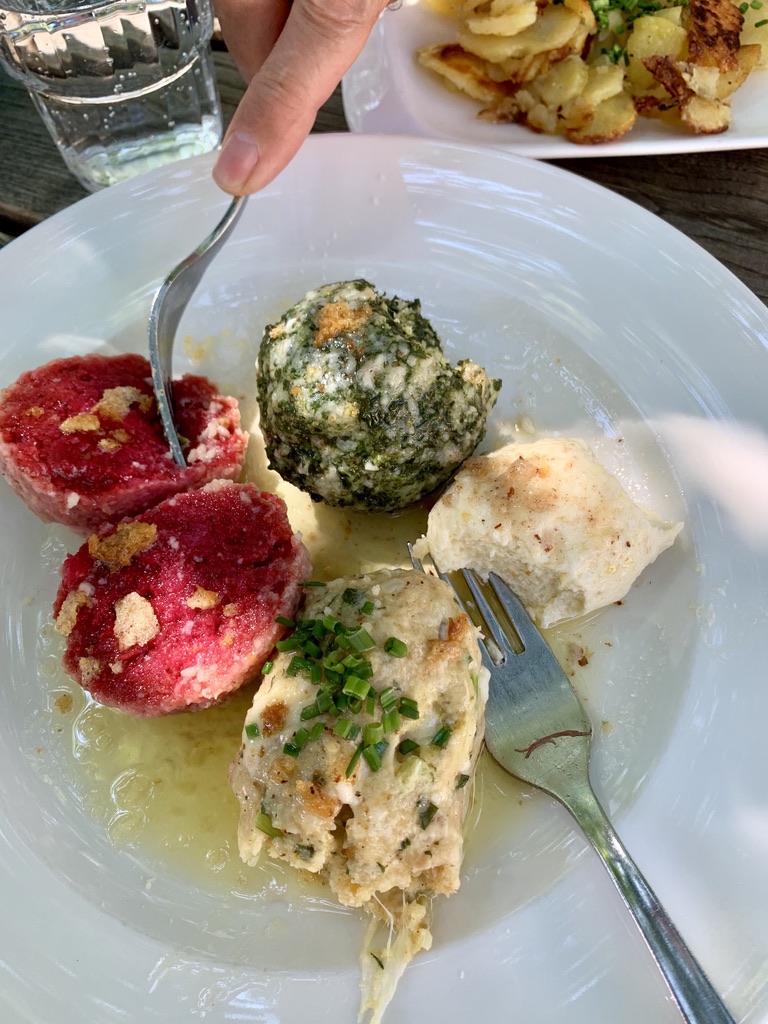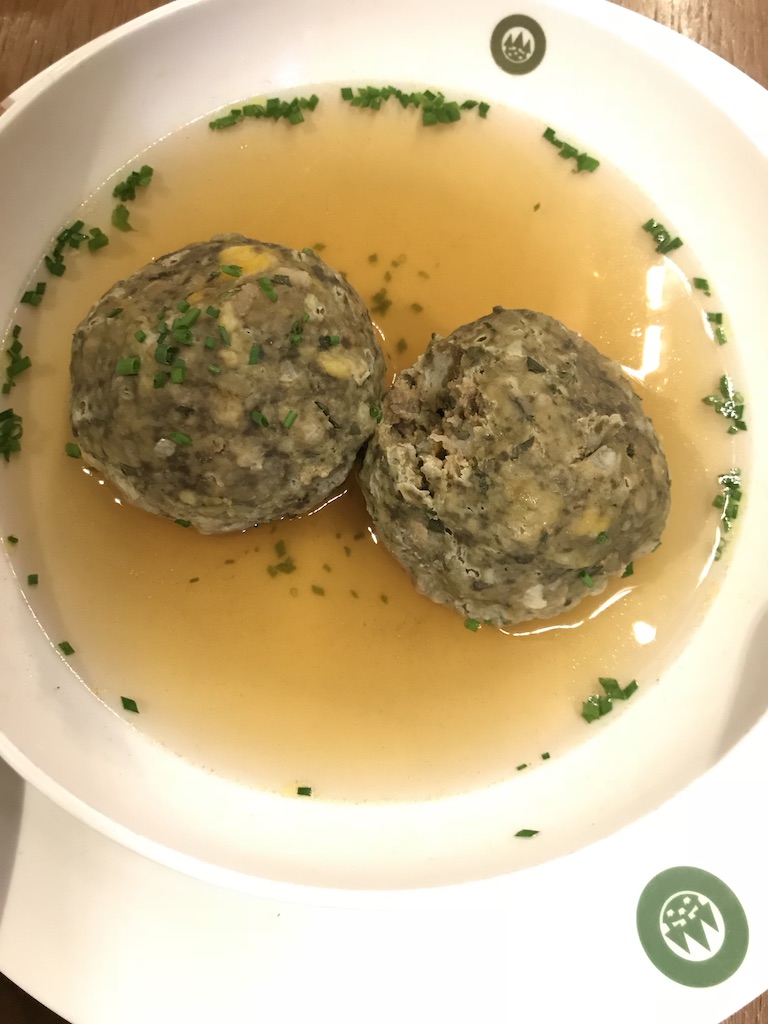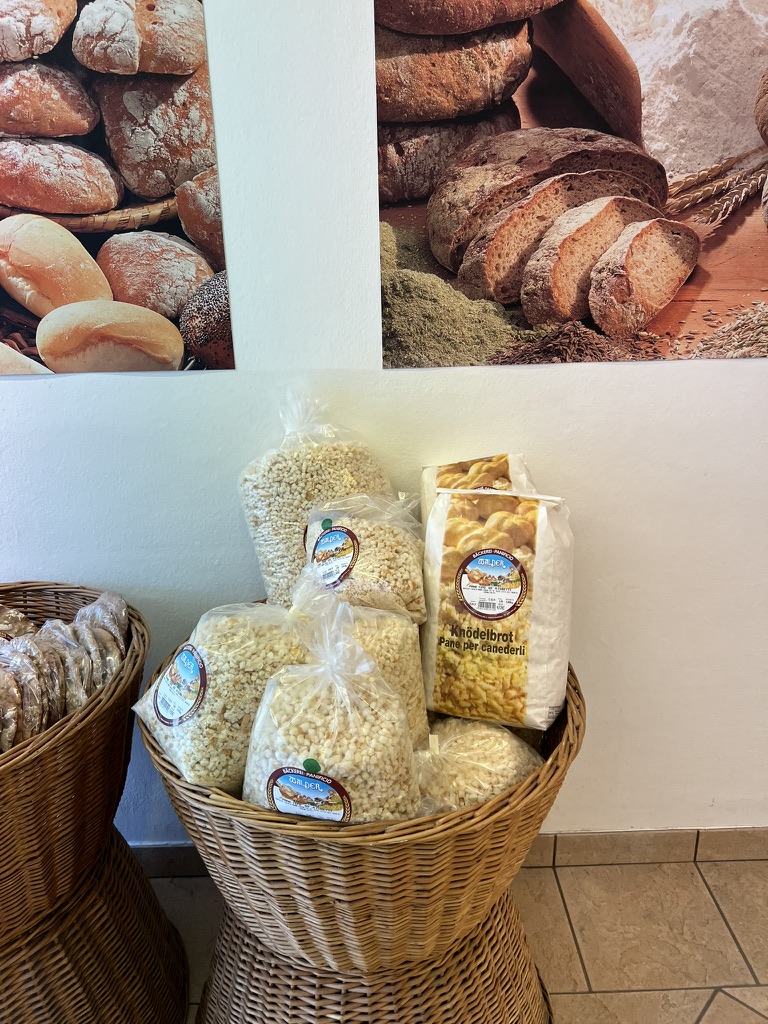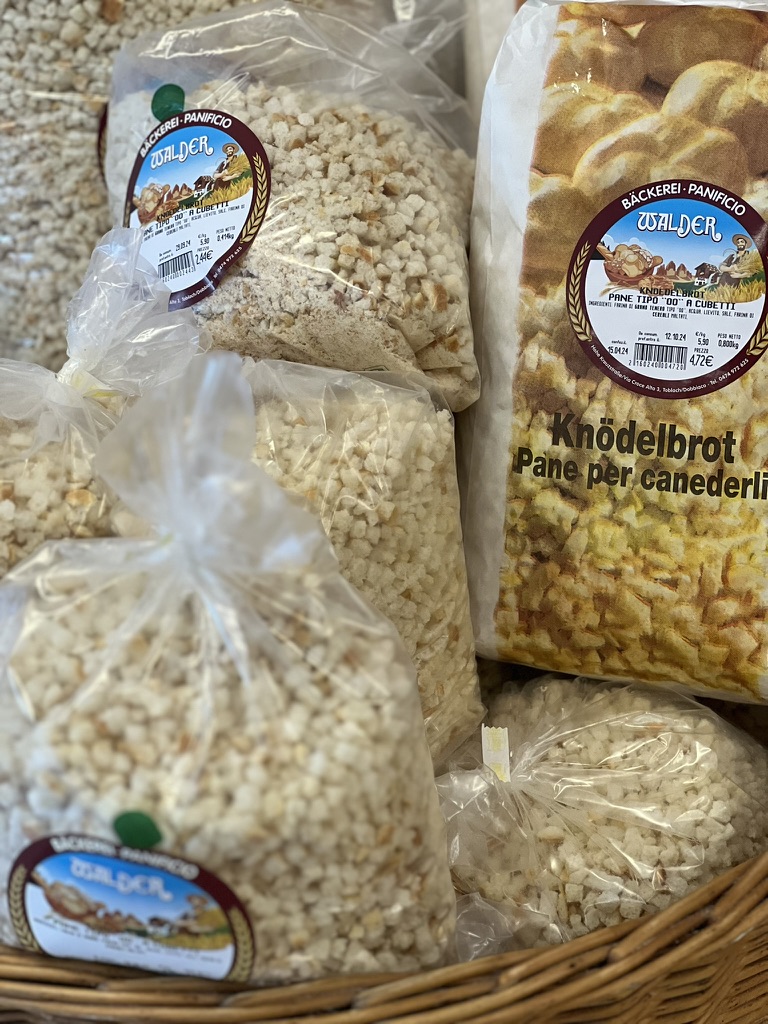



I have been working on ways to make the knodelbrot that is sold commercially in the Alto Adige to make canederli (knodel
in German). Home cooks apparently favour stale kaiser rolls or buy these bags of ready made knodelbrot which are sold in all the local bakeries.
They are amazing and seem to be shelf stable, light as a feather and do not get hard and dry over time like bread does if just left to stale at room temperature. They make very light canederli, not heavy. Does anyone know how this is acheived? Perhaps the bread is cubed and then dehydrated rather then just left to stale at room temp? I have visited the region many times and always bring knodelbrot home with me. I've used it for a year or more and it is still stable and very light. Anyone out there with any technical knowledge on how I might be able achieve making my own? The cubes are about 1cmx1cm.
Thanks in advance!
I found yeast raised dumplings in broth is quite romantic. I know this post is supposed to be a baking question post. Nevertheless, thanks for the idea. Seems perfect for entertaining.
Jay
canederli are not yeasted but I like the idea of a yeasted dumpling too, if you come up with a formula I'd love to know. TY
According to my chatbot, use a lean dough with an even crumb, and dry the pieces out at an elevated temperature but not so high that it gets to the gelatinization temperature. That would be 120 - 135 F. A dehydrator would be best, since you want a dry environment with good temperature control. With a dehydrator you could use slightly higher temperatures, 130 - 140 F. Otherwise leave the door of the oven open a little to let moisture out.
TomP
thank you so much Tom I will try that!
In Celsius, the temperatures you've suggested would be above the boiling point of water, which is more than high enough to gelatinize starches.
Paul
Yes, you are so right, I copied the wrong temperatures. Corrected in my post above.
I wondered about that as I tried it in C and the knodelbrot got toasted! Will try again in F. Thanks again
I had already tried it in C and got a toasted browned batch of knodelbrot! ....Will try now in F. Thanks for pointing that out!
Basic Knödel brot is made from drying basic lean white wheat yeasted bread or rolls that have gone stale (partially dried) or at least a day old but not mouldy. The bread or rolls are cut into cubes and allowed to air dry. Common is to spread the cubes loosely on a rimmed baking sheet. This way the cubes can be dried in an oven using residual heat or just by leaving the oven door ajar. Covered with a net or thin dish towel trays can be placed in the sun. A dark baking sheet heats up fast in the sun reducing the drying time. Good to turn or rotate the cubes occasionally so all sides dry evenly. One could call them plain croutons.
Here in Austria we also call Knödelbrot, Semmelwürfel: Semmel = Kaiser roll + würfel = cube. Can also use the rest of baguettes, same basic dough.
They can stale or change flavour with time so date the bag or container, make sure the cubes are crispy dry before bagging and do a taste test before using.
Mini Oven
.
When I first came to Austria as a young bride, making knödel cubes was one of the regular kitchen chores…taking the half dried leftover white bread and cutting into cubes before it dried completely. (Once dried, the bread would be almost impossible to cut up , so it would then be broken in half and used for other recipes.) The tray of cubes would then be parked out of the way on top of the cupboard.
After using the oven, the tray would go into the warm oven with a wooden spoon keeping the door ajar as it cooled. If the tray was needed the next day, the dried cubes ended up in a large wide bowl which seemed to always be in a state of waiting either in the oven or on top of the cupboard (covered with a towel) to have the cubes be turned into knödeln.
The small almost rounded cubes sold at the bakery are similar but on a more massive scale being cut slighty smaller and dried in a drum type dryer. They also get their additional supply of crumbs with this process. If I need crumbs I toss the dried cubes and/or half rolls into a barrel grater.
Now the cubes don’t necessarily have to be completely dried to use in a recipe. You only need to adjust the additional moisture being added to avoid ending up with a wet mess.
Have fun, Mini
Thanks for this Mini, so interesting!